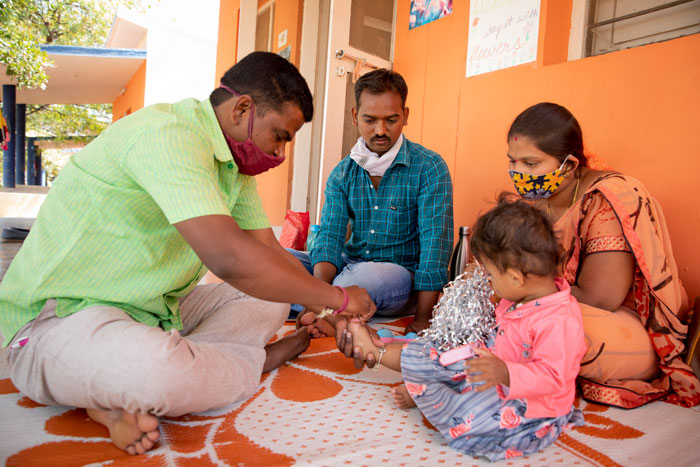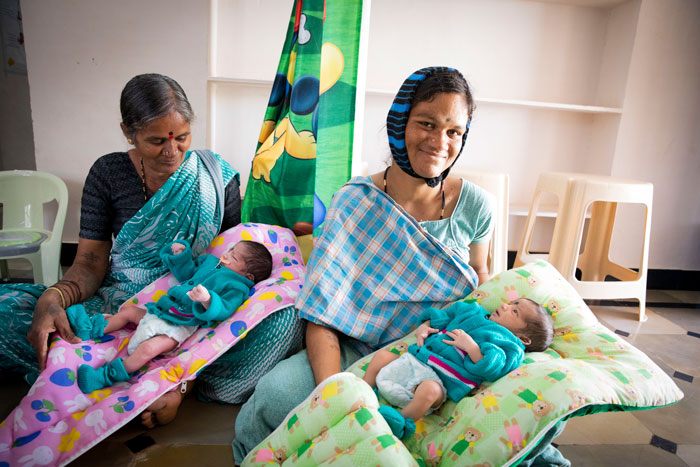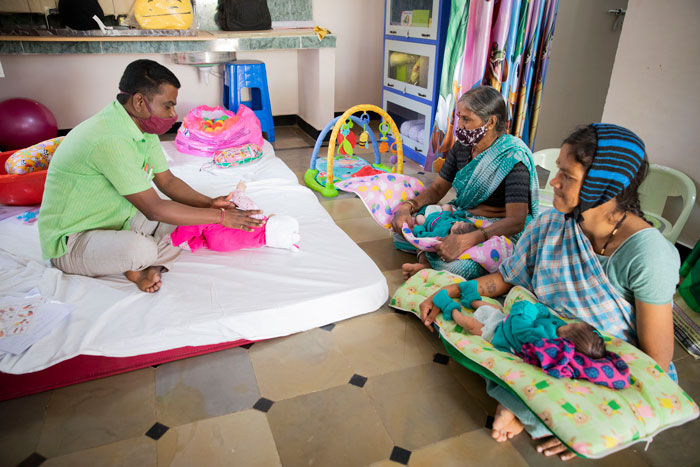Home > Blogs
Early Intervention: A ray of hope for mothers and babies
“Hold the baby close to you and support their back and neck. Don’t rush, though. Be gentle,” Chandra explains to Sunita who gave birth to twin boys 12 days ago.
Men advising new mothers on how to take care of their babies is not a scene we usually encounter, but Chandrashekar, fondly known as Chandra, a therapist for the Early Intervention program at the RDT Kalyandurg Hospital campus, knows what he’s doing.
Chandra, demonstrating with a doll, about the different positions to hold a baby. ©RDT
Since Sunita gave birth at the RDT Kalyandurg Hospital, one of her babies has had difficulty breathing and eating and has abnormal blood sugar levels. This is why the staff at the Kalyandurg Hospital referred her to Chandra for consultation.
“At this center, we work with pregnant women, new mothers, and babies between 0-2 years who show signs of cerebral palsy or intellectual disability as well as at-risk pregnancies, feeding issues, etc.,” says Chandra. These mothers are referred to him by the RDT Kalyandurg Hospital or by RDT staff who encounter them their field work. Sometimes parents also come for consultation by themselves.
Today, during this first consultation, Chandra has been going through Sunita and her babies’ medical history. He is advising Sunita on how to hold and lift the baby, especially while breastfeeding, how to hold them after they are fed, and what soothes and calms the child. In regular sessions, Chandra will work with the mother on the progress of her baby.
Sunita and her mother with the twin babies. ©RDT
“I was very worried about my son’s health. After coming to the center, I feel a bit relieved. I am sure with proper care and therapy he will soon be alright,” expresses Sunita.
The Early Intervention program was started by RDT’s Disability Inclusive Development sector over 12 years ago and has continued to evolve since then. The program, including this center at Kalyandurg, was closed during the pandemic but reopened in September 2020. While Chandra works Monday to Saturday at this center, other therapists provide home therapy and organize intervention camps in the villages in the RDT project regions.
“I generally see a minimum of 6-7 patients on a daily basis but on some days, it goes up to 11. They are usually new or follow-up cases,” says Chandra.
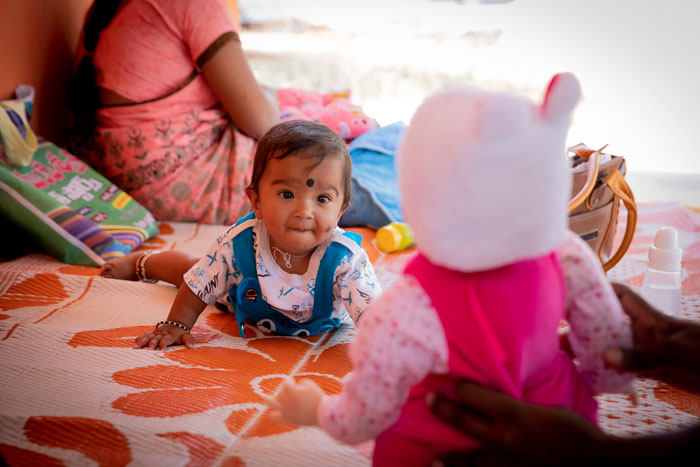
Using toys that are bright colored and make different sounds stimulates the senses of the babies. ©RDT
Like Triveni and her 8-month-old baby who has been coming to the center since November 2020. Born at 32 weeks – a premature birth – the baby was experiencing developmental delays and slow physical growth. She has been receiving therapy to strengthen her muscles and improve her movement. After learning from Chandra at the center, Triveni continues the exercises with her baby at home to keep up the progress.
“There have been considerable changes in my baby’s development after starting therapy. I feel so happy when she tries to crawl all by herself,” says Triveni.
Parents bring their children from neighboring cities like Uravakonda, Kanekal, Bellary and Paogada for consultation and therapy, too. So far, Chandra has worked with over 174 kids since the center reopened in September.
“Parents come to the center worried that their babies are experiencing problems, but they also place their trust in us. When we regularly work on therapy and exercises, parents become elated to see the small steps of progress that their babies make. It gives me immense joy,” shares Chandra.
Chandra providing exercises for muscle strengthening and teaching the same to Gananya’s parents. ©RDT
This holds true in the case of Gananya, a 14-month-old. She was experiencing developmental delays after undergoing a surgery for excessive build-up of the fluid that surrounds the brain and spinal cord when she was 2-months old. Since October 2020, Chandra has been working on strengthening her muscles and providing play support and stimulation.
“After three months of therapy, we were overjoyed to see Gananya use support to stand on her feet all by herself. It gives us so much happiness to watch her grow,” the parents said with wide smiles.
Text: Felita Viegas and Tahiya Tarannum, adapted by Vicente Ferrer Foundation USA

Meehanski: “My disability hasn’t stopped me from making my dreams come true”
09/29/2022Meehanski defines herself as a feisty and stubborn woman, but above all independent and ha...
READ MORE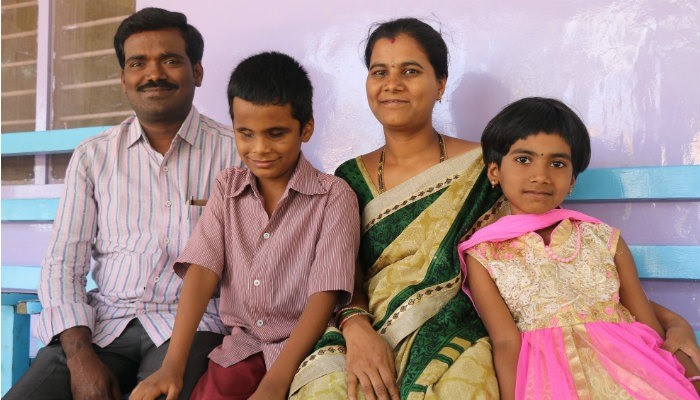
Visually impaired student becomes a Telugu singing star
09/28/2022“When I sing, I feel invincible,” says Sreesanth Naik. At the young age of 10, he has ...
READ MORE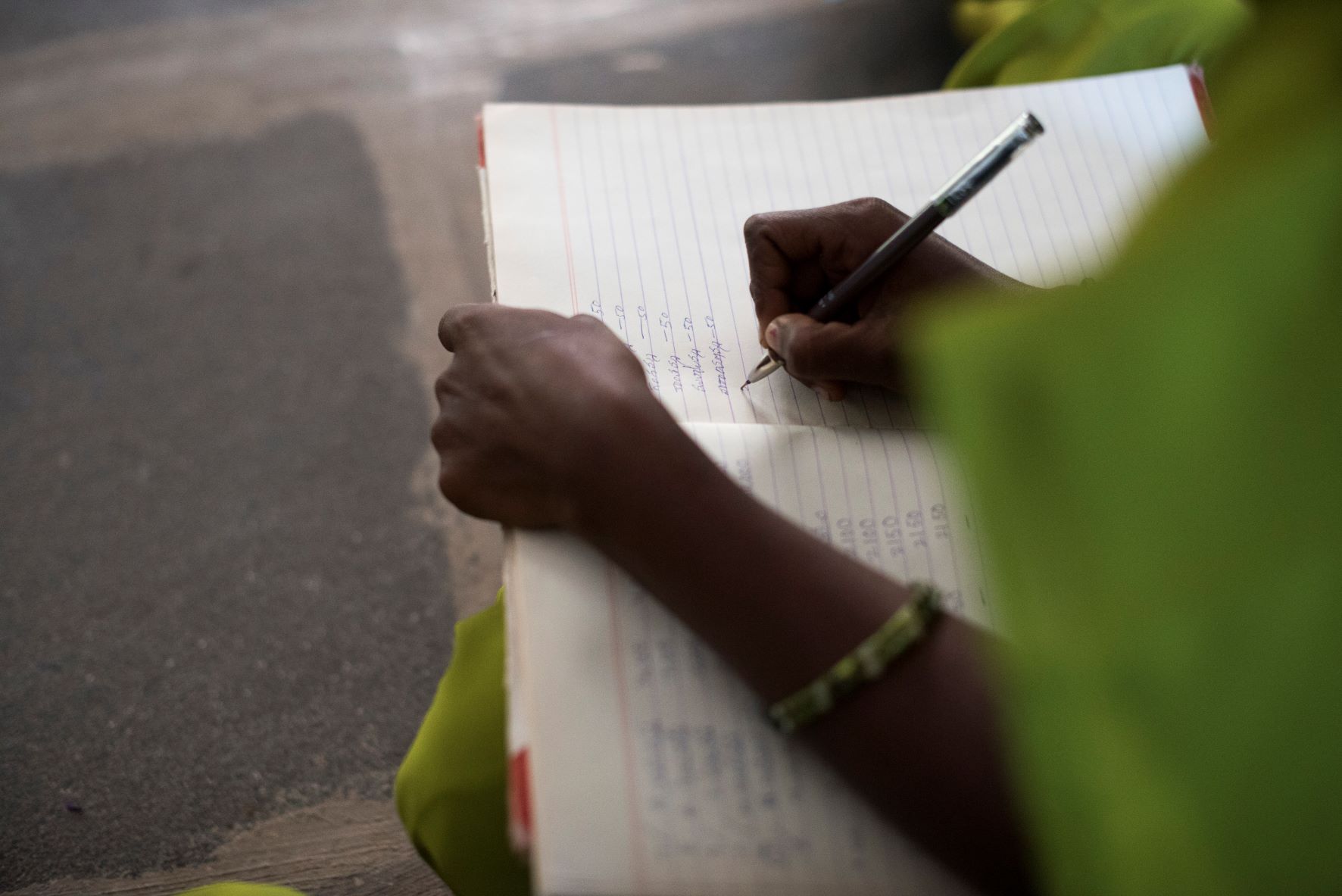
Malleswari’s Story: How Education Helps Breaks the Cycle of Poverty
12/22/2021Born in a village located in the deep forest of Nallamala in the Indian state of Andhra Pr...
READ MORESupport our work to help individuals and communities affected by COVID-19
Would you like to know how we use the funds?LEARN MORE
 February 25, 2021
February 25, 2021